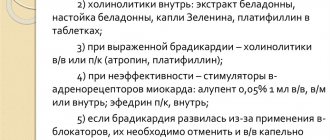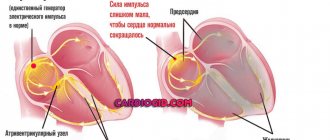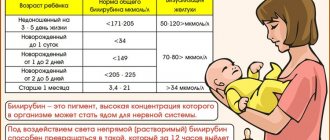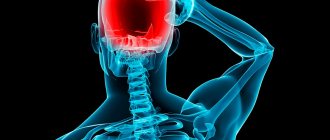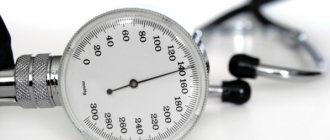What is low blood pressure
Blood pressure is not higher than 120/80 mm Hg. Art. is considered normal, but less than 90/60 mm Hg. Art. – reduced.
But these are average values, since each of us has our own optimal (working) blood pressure indicators, and it becomes low if it decreases by 20% compared to the individual norm.
With a significant drop in pressure, blood does not flow in the required quantity to all parts of the body. As a result, cells are insufficiently supplied with oxygen and nutrients. Organs that do not receive enough blood begin to function poorly. Prolonged oxygen starvation is especially undesirable for the central nervous system and brain.
Interesting: approximately 7% of the population is of the asthenic type with genetically determined low blood pressure. Asthenics are distinguished by a fragile physique, pale skin, and often have blond or brown hair. These people are characterized by moderate performance and endurance, and when blood pressure rises to 120/80 they feel unwell.
How to quickly raise blood pressure at home for an adult
Question answer
Many people suffer from low blood pressure, but not everyone knows about their diagnosis, attributing the pathological condition to increased fatigue, lack of sleep and stress.
You need to see a therapist. It is important to make a clear diagnosis and examine the internal organs that may have been damaged due to the disease. In this case, you most likely cannot do without medications, but only a doctor can prescribe a treatment regimen.
We advise you not to delay your visit to a therapist. He must conduct an examination and identify pathology in order to begin qualified treatment. If this is not yet possible, you can take herbal infusions and streamline your lifestyle to improve its quality. Eat properly and balanced, get quality rest and provide your body with the required physical activity.
We described in detail about methods of dealing with unpleasant symptoms in the article. But you definitely need the help of a local therapist. It is necessary to conduct a full examination and identify all pathologies of the body in order to take comprehensive measures for its treatment.
What is hypotension
A condition in which the pressure is below 90/60 units is called hypotension. If it does not impair the quality of life, then most likely it is a congenital feature. However, in most hypotension is combined with unpleasant symptoms:
- one feels apathy, weakness and fatigue even after a deep, long sleep;
- concentration decreases;
- headache (usually pulsating in the temporal region);
- nausea sets in;
- it gets dark in the eyes, you feel dizzy;
- chills, sweats, especially sweaty palms and feet;
- thermoregulation is disrupted - the temperature drops to 35.5 - 36 oC;
- sometimes there is shortness of breath on exertion or a feeling of incomplete inspiration.
A complex of such phenomena, caused by poor blood supply to tissues, makes it difficult to concentrate, do work, and even just move around. Hypotension in elderly people suffering from atherosclerosis can provoke ischemic stroke and accelerate the development of angina pectoris.
Important! If, with a sharp drop in pressure, there is rapid shallow breathing, a rapid weak pulse, pallor, cold clammy skin, and confusion, you should call emergency help. The listed symptoms indicate acute hypotension, characteristic of a state of shock (collapse), often leading to cerebral hypoxia and death.
When to call an ambulance
As soon as you notice not only a significant drop in blood pressure in yourself or a loved one, but also
- cold, clammy and pale skin;
- fast shallow breathing;
- weak and fast pulse;
- confusion.
These are signs of so-called acute arterial hypotension (collapse, shock). This condition is life-threatening. It can lead to hypoxia of the brain and internal organs. Therefore, you should not hesitate to seek medical help.
Causes of low blood pressure
Blood pressure decreases with a lack of body weight, anemia (lack of hemoglobin in the blood), unfavorable working conditions, moving to another climate zone or high mountain region, or a change in weather or season. A sharp drop in blood pressure combined with malaise can be caused by:
- acute heart failure;
- concussion, head injury;
- exacerbation of a peptic ulcer or an attack of pancreatitis
- intoxication;
- overdose of cardiac drugs (Corvalol, motherwort tincture, valocardine);
- taking antispasmodics and anesthetics, large doses of antibiotics.
Pressure drops with any blood loss - due to injury, severe nosebleeds or hemorrhoids. In completely healthy people, blood pressure values sharply decrease after procedures that dilate blood vessels - hot baths, steam baths, saunas, wraps, swimming in thermal springs. In childhood and adolescence, low blood pressure is associated with disorders of the autonomic nervous system due to accelerated growth.
Persistent hypotension can be caused by various diseases:
- chronic heart failure - when the heart becomes inflamed as a result of endo- or myocarditis (occurs after tonsillitis, flu), it pumps blood worse;
- cardiac arrhythmias and blockades caused by disruptions in the nervous regulation of the heart;
- pre-infarction condition;
- chronic adrenal insufficiency;
- diabetes;
- hypothyroidism;
- renal failure;
- neurocirculatory vascular dystonia;
- different types of depression
For chronic hypotension, accompanied by dizziness, weakness, nausea, you should consult a therapist. If you are concerned about frequent symptoms of low blood pressure, an in-depth examination is recommended: ultrasound of the heart and blood vessels, cardiography, FGDS. You can get a referral to a neurologist, cardiologist, endocrinologist, or gastroenterologist from your therapist.
Bibliography
- E. V. Kudina, V. N. Larina. "Arterial hypotension in the practice of a clinic physician." / Educational and methodological manual for students, residents, graduate students. - M.: Publishing House of the Russian Academy of Medical Sciences, 2016.
- Mikhailov A. A. Chronic arterial hypotension: possibilities of drug correction //Russian. honey. magazine. — 2004.
- Belokon N.A., Osokina G.G., Leontyeva I.V. Vegetative-vascular dystonia in children: clinical picture, diagnosis, treatment (methodological recommendations) // M., 1987.
- Glaurov A.G. Transient disturbances of cerebral circulation in primary arterial hypotension // All-Russian Congress of Neuropathologists and Psychiatrists: Abstracts of reports. - M., 1976.
- Kobalava Zh.D., Kotovskaya Yu.V., Kladiev A.A., Moiseev V.S. Daily blood pressure monitoring in clinical practice. // Clinical pharmacology and therapy. – 1996.
- https://vesti.ua/poleznoe/kak-podnyat-davlenie-v-domashnih-usloviyah
How to increase blood pressure without drugs
At home, you can increase your blood pressure with the help of special exercises, breathing practice (similar to exercises with low saturation), foods, drinks and even plain water.
Correct body position, exercises, massage
If hypotension occurs, it is recommended to lie down immediately. If there are no conditions for this, you can improve your well-being in the following ways:
- immediately sit down and lower your head as low as possible, placing it between your knees - to ensure a sufficient flow of blood to the brain;
- sit down with your legs crossed - by reducing the amount of blood in the lower extremities, its volume and pressure in the main vessels will increase;
- standing, cross your legs at the knees and press your thighs together;
- raise your leg, place it on a bench or chair, while tilting your body forward as much as possible.
Interesting: if you have low blood pressure, you can wear elastic stockings for varicose veins. They will displace some of the blood from the lower extremities into the main vessels of the body, thereby increasing the pressure.
The following physical exercise will help improve your condition (if your age allows): you need to lie down, put your legs behind your head and stay in this position for 5-10 minutes. It is also useful to massage the neck and shoulders, actively rub the muscles of the legs and lower back.
Food and drinks
The pressure in the circulatory system depends on various factors. To raise blood pressure in an adult , you need to increase the tone of the vascular walls, increase the volume of fluid in the body, speed up the heartbeat, and increase the level of glucose in the blood. The following foods and drinks will help you urgently achieve these goals:
- ordinary clean, mineral or slightly salted water - you need to drink 1-2 glasses;
- natural coffee with a slice of dark chocolate;
- strong, freshly brewed black or green tea;
- cocoa with sugar;
- a glass of hot hibiscus tea;
- pomegranate juice;
- a piece of salted fish, cheese or lard, a pickled cucumber, a piece of generously salted rye bread or simply dissolving salt under the tongue - a common kitchen seasoning containing sodium retains fluid in the body and increases blood volume;
- slice of bread with honey and cinnamon.
Important! Caffeine quickly tones blood vessels and causes the heart muscle to contract more often. But it increases blood pressure if a person rarely drinks coffee. But for coffee lovers, the invigorating drink has the opposite effect, dilating blood vessels. In this case, it is better to make a decoction of rose hips, strawberry leaves or black currants.
Breathing exercises
Hatha Yoga has a section called pranayama, which describes the control of vital energy using specific types of breathing. One of two simple exercises from the practice of pranayama will help increase blood flow and increase pressure in the vessels:
- "Bhastrika". Forced inhalations and exhalations are performed through the nose. After 10 repetitions, tinnitus usually appears, darkening of the eyes and slight dizziness are possible. These are signs of activation of the nervous system and increased oxygen supply. It is advisable to perform 3 sets of 20 inhalations and exhalations.
- "Kapalabhati". Alternate between normal inhalation and intense exhalation through the nose, strengthened by the abdominal muscles (they seem to “squeeze out” the remaining air). Kapalbhati is also performed in 3 steps of 20 repetitions.
As a result of any of the exercises, the tonometer readings will increase after 5 minutes. If you practice the complex daily to train the nervous system, then after a couple of months the base pressure will be adjusted upward.
what to do if you have low blood pressure
Citramon to increase blood pressure
Citramon contains acetylsalicylic acid, paracetamol and caffeine. The first component thins the blood, the second reduces pain, and caffeine, as already noted, stimulates breathing, nerves and heart activity. It has a positive effect on blood circulation, so the body receives more oxygen. When the pressure normalizes, the person begins to work more actively. It is believed that citramon increases blood pressure. But the content of the invigorating component in this medicine is very small, so you will need 2 tablets, and even then they do not help in all cases.
Drug therapy for hypotension
Pharmacy medications will help quickly bring low blood pressure back to normal, before taking which you should definitely consult a doctor, take into account contraindications and possible side effects. Medicines for hypotension are divided into several groups.
Plant adaptogens
They gently stimulate the central nervous system, eliminate drowsiness and effectively increase blood pressure. Hypotonic patients are recommended to have one of the following tinctures in their home medicine cabinet:
- ginseng root;
- Eleutherococcus;
- rhodiola;
- lemongrass;
- lures;
- peony
Depending on how much the pressure has decreased, take from 15 to 30 drops of any of the tinctures. In pharmacies you can also find tablets on a natural basis - Pantocrine, Saparal, Caffeine.
Means for activating the nervous system
Medicines stimulate the central nervous system and mental activity, increase physical activity, eliminate drowsiness, and increase concentration. This group includes:
- Caffeine + sodium benzoate;
- Cordiamine;
- Akrinor;
- Etimizole;
- Symptol.
Other drugs
Blood pressure quickly increases Heptamil tablets, Niketamide, Midamine drops, Noradrenaline and Mezaton injection solutions. A popular traditional remedy is Citramon, which includes paracetamol, caffeine and acetylsalicylic acid. This medicine thins the blood and activates blood flow, as a result, the organs are better saturated with oxygen.
Medicines for high blood pressure
If non-drug methods of increase do not produce results, you need to resort to the use of medications. A common remedy is caffeine sodium benzoate (tablets). This stimulant is known throughout the world and is added to energy drinks. However, they increase blood pressure, but negatively affect the functioning of the gastrointestinal tract. Therefore, drinking energy drinks is not recommended!
Caffeine is also known as trimethylxanthine. This is a powder that has a bitter taste. This substance is also a diuretic; it dilates peripheral blood vessels. It increases blood pressure only for a while. With normal blood pressure, the readings may not change when taking caffeine. You should follow the dosage prescribed by your doctor (or indicated in the instructions for the drug). In large doses, the drug can negatively affect some organs; it is also rare, but it causes addiction.
The second popular remedy is lemongrass tincture. 25 drops are diluted in 100 ml of water. Give to the patient 15 minutes before meals, 2-3 times a day. It is not recommended to take this alcohol infusion at night. If you have insomnia, try using it only in the morning and at lunchtime, and after 16:00 do not drink lemongrass tincture to increase blood pressure.
Ginseng tincture is the third most popular remedy for increasing blood pressure in hypotensive patients. The drug is also believed to strengthen the immune system. Do not use this medicine in the evening as it will make it difficult to fall asleep. This remedy is also not suitable for pregnant and breastfeeding women. One dose delivers an average of 20 drops.
Eleutherococcus is also a popular remedy for raising blood pressure. It relieves accumulated fatigue and is used in frequent stressful situations. After long illnesses, the body is weakened, so the doctor may also prescribe a tincture of Eleutherococcus. But this is not only a tincture; the drug is available in capsules and tablets. There is also dry raw material that is brewed and drunk. The most popular is the liquid extract of Eleutherococcus. Take 1-3 times a day, 15-30 drops (depending on the age and weight of the patient). The course of treatment for hypotension is 30 days.
Leuzea extract normalizes blood pressure, tones the body and strengthens the body's defenses. Thanks to this remedy, the body adapts to heavy loads. Take 1-3 times a day, twenty or thirty drops. This drug is also available in tablet form, take a maximum of 3 times a day, 1-2 tablets.
All the drugs mentioned above stimulate, to a greater or lesser extent, the activity of the heart, blood vessels and nervous system. Thus, after taking one of these drugs, a person’s vascular tone increases, which is why blood pressure increases. Below we will describe how other drugs that people periodically use to treat hypotension affect blood pressure readings.
Preventive measures
If you have occasional problems with blood pressure, you should not always start with taking medications. In 80% of cases, hypotension occurs due to uncontrolled use of drugs for hypertension, lack of sleep, overwork, neuroses, and lack of vitamins C, E, B12. Therefore, for prevention, it is worth establishing a daily routine, increasing physical activity, and including healthy foods and drinks in the menu.
General recommendations:
- sleep at least 9 hours at night;
- regularly ventilate the premises;
- do exercises, train with a manual expander, swim, walk at least 2 hours a day - physical exercise tones blood vessels;
- drink 1.5-2 liters of water per day (and more in hot weather);
- do not stand in one place for a long time, when standing, do warm-ups (walk, jump, squat);
- take a contrast shower;
- avoid prolonged stay in a hot bath or stuffy room;
- regularly eat vegetables and fruits, fat-containing foods;
- do not abuse alcohol.
How to eat with low blood pressure
If possible, split meals should be arranged. It is advisable to divide the daily amount of food into 6-8 times, eat in small portions. The combination of products is selected so that every breakfast, lunch, dinner and snack is balanced. For hypotension, the menu includes the following products, dishes and spices:
- Fatty fish, beef liver, brains, red meat. It is better to boil, bake, steam them in order to preserve the maximum of useful components. The liver is used to make pates or add to salads.
- Fried meat, vegetables. They increase cholesterol levels and blood pressure. You need to eat fatty foods in moderation so as not to harm your digestive system. If you have problems with the gastrointestinal tract, such dishes are undesirable.
- Carbohydrates. There are many of them in confectionery and sweet baked goods. Such food promotes vasoconstriction and increases blood pressure, but in large quantities it is harmful and is contraindicated for diabetics.
- Porridge (buckwheat, oatmeal), beans, peas, beans.
- Vegetables, fruits, berries containing a lot of flavonoids and iron. These are carrots, beets, pomegranates, raspberries, currants, dogwoods, strawberries, citrus fruits, and greens. Every day they should be eaten up to 800 g in 5-6 meals in the form of side dishes, additives to sandwiches, smoothies, compotes, fruit salads.
- Salt, onion, garlic, horseradish, cloves, cinnamon. Salt retains fluid, and spices constrict blood vessels.
Smoked meats, marinades, salted fish, and cheeses will help increase blood pressure.
Herbal infusions and decoctions
If you are prone to hypotension, take infusions of herbs and berries. 1.5 tbsp. spoons of vegetable raw materials are poured into 300 ml of boiling water, cover with a lid, leave for 4 hours and filter. Drink the prepared drink three times a day, half a glass before meals. Here are some effective formulations:
- 20 g of black currant berries and barberry fruits, 40 g of rose hips, 30 g of lungwort herb
- 30 g each of black currant leaf, chicory root, plantain leaf, nettle herb, 20 g dandelion root
- 40 g red rowan, 30 g each wheatgrass and strawberry leaves, 10 g centaury herb
In folk medicine for hypotension, a decoction of a mixture of birch leaves, nettles, strawberries, black currants, and rose hips is used. 4 tbsp. spoons of the collection are poured with a liter of hot water, brought to a boil and boiled for 2 minutes. Let it brew for an hour, filter, drink 100 ml before meals.
When using folk remedies, do not forget to check your blood pressure with a tonometer.
Does coffee/tea raise blood pressure?
To some extent, tea raises blood pressure, because it contains a small proportion of caffeine. However, this is not enough to solve pathological conditions. More effective methods are required to bring the tonometer readings to normal and safe levels.
You can take decoctions and herbal infusions instead of tea. They are also brewed to produce a kind of herbal tea. Decoctions of rose hips, black currants, barberry fruits, infusions of dandelion roots, chicory, and black currant leaves will be useful.
In folk medicine there are many ways to raise blood pressure. When asked how to raise low blood pressure, healers give at least a dozen recipes for infusions and decoctions that help eliminate the unpleasant symptoms of illness.
Antibiotics and blood pressure
Antibiotics today treat most infectious diseases. Antibacterial drugs do not affect the activity of the heart and the condition of blood vessels if taken as prescribed by the doctor. If you drink alcohol during a course of antibiotics, the toxic effect of the drugs on the body is likely to increase. Death as a result of such negligence with one’s own body is also possible. The combination of alcohol and drugs can greatly increase blood pressure, make it difficult to breathe, and slow down your heart function. The load on the liver also increases, which affects blood pressure levels.
Ascorbic acid and blood pressure
Ascorbic acid (vitamin C) affects blood clotting and capillary permeability. This drug may increase blood pressure in some people. If you self-medicate, exceed the frequency of use or dosage of the medicine, it is likely that your blood pressure will increase and kidney function will be impaired. An increase in blood pressure when taking ascorbic acid is considered a side effect. Vitamin C is not prescribed to influence blood pressure.
Actovegin for blood pressure
Actovegin improves tissue nutrition and affects reparative processes. It is prescribed for encephalopathy, ischemic stroke, neurological diseases, etc. Actovegin does not increase blood pressure, and in some cases it can reduce it. The drug can be prescribed for cerebral vascular hypertension, because its active ingredients moderately dilate blood vessels. In severe hypertension, Actovegin is part of systemic therapy and is administered intravenously.
Does Ketorol increase blood pressure?
Ketorol relieves inflammation and pain. Refers to non-steroidal drugs. The active ingredient of this medicine is ketorolac. Ketorol is available in tablets and liquid for injection. When taking the medicine, a slight increase in blood pressure may occur. But this only happens if a person is prone to hypertension. Ketorol cannot be combined with drugs that lower blood pressure, as well as with diuretics, because taking Ketorol will reduce their effectiveness.
Symptoms of high blood pressure
High blood pressure is often called the "silent killer" because in most cases it causes no symptoms. The only way to find out if it is there is to measure it with a tonometer. High blood pressure can sometimes be accompanied by one or more of the following symptoms:
- Strong headache;
- dyspnea;
- dizziness;
- nosebleeds;
- severe anxiety.
Usually the headache is in the back of the head; during crises, one often feels dizzy and is accompanied by nausea and vomiting.
Does pu-erh increase blood pressure?
Pu-erh is a dark variety of tea, but not black, as the manufacturing technology is different. Budget options for this tea are ready-made Pu-erh (Shu) and raw Pu-erh (Shen). At reduced pressure, the second of them is used. Thanks to it, the body’s tissues receive more nutrition, and digestion is normalized to some extent.
Shu Pu'er should not be drunk in large quantities. It lowers cholesterol in the blood, is used to prevent vascular and heart diseases, and removes harmful substances and toxins from the body. Pu-erh increases blood pressure, so if the norm is exceeded, short-term hypertension may occur. To avoid affecting blood pressure, drink it not so strong or in the amount of 1-2 cups per day. It is better to avoid consumption at night.
Ways to lower pressure
Before taking any measures, you need to make sure that the malaise is associated with high blood pressure. Therefore, anyone who suffers from frequent headaches, sleep disturbances or loss of strength needs to have a tonometer at home - a device that measures blood pressure. Headache and general weakness can occur with both low and high blood pressure. Taking the wrong medication can be a fatal mistake.
Pharmaceutical companies produce many drugs that can normalize blood pressure. Most of them are analogues of each other, so it is important to pay attention not to the name of the drug, but to the active substance underlying the medication.
Self-administration of blood pressure-lowering pills is unacceptable, because it is important to know what exactly caused the increase in blood pressure. Among the variety of drugs, it is important to choose one that will return the tonometer readings to the acceptable limits of the norm, having a beneficial effect on the cause of the jump. Universal drugs that knock down the tonometer column by several points can be taken only as a last resort, when it is not possible to obtain prompt consultation or the patient’s condition is extremely dangerous: the upper indicator tends to 180-190mm.
When a doctor diagnoses hypertension and prescribes taking the drug in a certain dosage, the prescription cannot be ignored. Such patients are forced to take pills to lower their blood pressure every day at a certain time in order to keep their blood pressure levels within normal limits. A single missed dose of the drug will lead to an immediate attack of hypertension.
For patients with nephritis and other renal dysfunction, it is important to remember that almost all diuretics sharply reduce blood pressure. Therefore, the use of diuretics by hypotensive patients should be under the supervision of a specialist.
Pressure and Cordiamine
The drug is an analeptic; it stimulates the CENS and chemoreceptors. This medicine increases your blood pressure. Breathing, accordingly, becomes more frequent and deeper, consciousness becomes clearer. Cordiamine can be used in case of a sharp decrease in blood pressure, for example, with suffocation or fainting.
Cordiamine is available in drops that need to be taken orally. Also available as a solution that is administered by injection. You need to take drops 1-3 times a day, 20-40 drops. And by injection (into the muscles, into the veins) it is administered in an amount of 1 to 2 ml. Among the side effects caused by overdose, researchers name overexcitement and seizures. You cannot prescribe this drug to yourself!
How to raise the pressure at school so that they let you go
Low blood pressure is a very common phenomenon, and is often not paid attention to, considering it a common ailment.
You should not treat this alarming sign with such carelessness - over time, a simple problem can cause a lot of trouble and require long-term treatment.
To prevent complications, you can use simple remedies, because you could write a huge dissertation on how to raise blood pressure at home quickly and without special medications.
How to raise blood pressure and pulse with simple drinks
The easiest way to influence not only your blood pressure, but also your pulse, is to use drinks that can dilate blood vessels in a short time. The disadvantage of this method is that the effect is short-lived; it can only be used in emergency cases when there are no medications or more effective folk remedies at hand.
Before raising blood pressure and pulse, you should make sure that they do not meet the standards; use a tonometer for this. Only after this can you begin simple and even pleasant treatment.
Coffee comes first in the fight against short-term low blood pressure. This particular feature of treatment should be taken into account - if the patient is addicted to this drink, then the desired effect may not be expected, because the body gets used to the effects of caffeine over time.
How to raise blood pressure at home quickly? To increase blood pressure almost instantly, just drink a cup of a strong invigorating drink. This is enough for the readings on the tonometer to quickly go up. Even if there is no coffee, it doesn’t matter - you can brew concentrated black tea, be sure to add sugar to it. One cup is enough to feel good.
How to raise your blood pressure so you don't have to go to school
A question that always remains relevant for every schoolchild is how to raise blood pressure so as not to go to school? There are no difficulties here either; there are many ways to stay at home, and with the permission of your parents. Adults will certainly be worried by the fact that their beloved child suffers from high blood pressure. The main thing here is not to overdo it, otherwise, instead of school, you can go to the hospital under the strict supervision of your parents.
How to raise blood pressure at home quickly so as not to go to school? Regular table salt will help here. You can simply salt your breakfast thoroughly, although this will not be as effective as the product in its pure form, and it is quite unpleasant to eat too salty porridge or an over-salted omelet.
It will be much more effective to simply take half a teaspoon of kitchen spice and place it on the tip of your tongue. Now all that remains is to wait until it completely melts and you can safely go to measure the pressure - it will increase significantly. The main thing here is not to hesitate, the effect lasts only a few minutes, but they are enough to convince parents of the need to stay at home.
How to raise blood pressure by pressing special points
There are many ways to quickly raise blood pressure without resorting to food or drinks. This can be done with a special massage, the main thing is to know how to do it correctly.
A massage that will certainly relieve the problem:
- massage the carotid artery in the neck with your fingertips, moving along it from bottom to top for several minutes;
- ask someone from your household to vigorously massage the back of your shoulders;
- Press the palm of your hand several times with force on the very center of the back of the head;
- rub the base of the skull with your thumbs for 1-3 minutes.
Of course, you shouldn’t count on a long-term effect, but often these measures are enough to bring blood pressure back to normal for a short time.
During this time, you can have time to go to the pharmacy for pills or prepare a herbal composition that will help no worse than medications.
You can go to the doctor and get advice on how to raise your blood pressure, if necessary, with simple pharmaceutical medications that do not require a prescription. If you keep them always at hand, troubles with blood pressure will never take you by surprise.
How to quickly normalize blood pressure for an elderly person
Old age often makes itself known not only by wrinkles on the face, but also by low blood pressure. How can an elderly person quickly return their tonometer readings to normal? The first thing that is recommended is to take a shower, and a contrast shower. You can stand under the hot streams of water for a few minutes, then suddenly turn on the cold water.
The next stage of treatment at home is taking tincture of ginseng or echinacea. You can buy them at any pharmacy and keep them nearby at all times, especially if your blood pressure is unstable. You need to take the medicine in small quantities, only 10 ml shortly before meals.
If you don’t have a tincture, you can get by with a simple tea made from Echinacea flowers. Preparation of the drink:
- grind 20 gr. vegetable raw materials;
- boil 220 ml of water;
- pour boiling water over the echinacea flower paste;
- Close the container tightly and wait a quarter of an hour.
You can drink the prepared medicine in one go, but the treatment will be more effective if you divide the liquid into two parts and drink it with a break of half an hour.
How to increase lower pressure quickly
It often happens that the upper pressure is normal, but the lower pressure drops to critical levels. What to do in such cases and how to raise lower pressure quickly without the use of pharmaceutical drugs?
Juice squeezed from aloe leaves will help with this problem. There is one trick in using this wonderful plant - the juice obtained not from fresh, but from slightly withered leaves is considered more useful. You can stock up on medicinal raw materials in advance; to do this, pick a few leaves, wrap them in thin polyethylene and put them in the refrigerator.
Source: https://davleniya.net/davlenie/kak-podnjat-davlenie-v-shkole-chtoby-otpustili.html
Ibuprofen increases blood pressure
Ibuprofen is classified as an anti-inflammatory non-steroidal drug. It normalizes body temperature and relieves pain; in this regard, it is better to use this particular medicine than aspirin. Ibuprofen can increase blood pressure, since this is a side effect that occurs in some cases when taking the drug in question. It should be prescribed with caution to patients with impaired liver function. Because Ibuprofen increases the toxic load on this organ, which may cause portal hypertension. The drug is not used to treat hypotension!
List of effective drugs
Medicines are prescribed to patients with long-term persistence of hypotension, subjective and objective signs of disorders.
The list of means for increasing pressure and their main characteristics are presented in the table:
| Medicine | Mechanism of action | Contraindications for use | Side effects |
| "Gutron": drops, tablets |
|
|
|
| "Pantocrine" (group of adaptogens) |
|
|
|
| "Apilak" (royal jelly derivative): tablets |
|
|
|
| "Citramon" ("Askofen"): tablets | Contains caffeine, acetylsalicylic acid and paracetamol
|
|
|
| "Cordiamine": solution for subcutaneous, intramuscular and intravenous administration |
Use when necessary to quickly increase indicators (within 15 minutes) |
Concomitant use with Aminazine, psychostimulants, narcotic analgesics, hypnotics, and anticonvulsants is not recommended |
The maximum permissible amount is 5 ml under the supervision of a doctor in a hospital setting |
| "Prednisolone": tablets, solution for intravenous, intramuscular administration | Glucocorticosteroid drug
|
|
|
The listed medications are strictly contraindicated to be taken simultaneously with antidepressants, alpha-agonists due to the risk of hypertensive crisis, acute myocardial infarction or stroke.
The dosage regimen and duration of treatment are prescribed by the doctor depending on the severity of symptoms and concomitant pathology.
In case of a critical decrease (upper values are less than 70 mm Hg), when it is not possible to increase heart pressure with tablets, emergency qualified assistance is necessary.
During emergency treatment for hypotension, drugs for parenteral (intravenous) administration are used:
- "Mezaton" ("Heptamil");
- "Dopamine";
- "Epinephrine" ("Adrenaline").
The drugs cause a pronounced vasospastic effect, increase the strength and frequency of heart contractions, and the tone of the arterial wall. Use is limited to resuscitation measures due to the high risk of adverse reactions and a list of contraindications.
In addition, infusion therapy is urgently prescribed to restore water balance (in case of fluid loss after bleeding, profuse diarrhea or vomiting).
Prevention of hypotension in the elderly
To prevent the development of hypotension and related diseases, older people should follow a number of recommendations:
- Try not to overwork and avoid stress.
- Drink 1.5 to 2 liters of liquid per day.
- Be active and mobile.
- Take frequent walks in the fresh air.
- Eat more herbs, spices and salt.
- Do general strengthening exercises.
- Limit hot baths, replacing them with contrast showers.
- Reduce the amount of carbohydrates in food to prevent surges in blood pressure and blood sugar.
What does Askofen help with?
The composition of this medicine is similar to Citramon, only different proportions are used. The drug helps relieve pain, inflammation, and it also normalizes the temperature if it is elevated. Due to the fact that it contains caffeine, the effect of which is described above, the excitability of the central nervous system increases, fatigue goes away to some extent, and the person becomes more active. Askofen increases blood pressure if it is low. It should be taken for hypotension in the amount of 2 tablets, but it does not help everyone, and its effect is short-lived (relates to increasing blood pressure). Continuous use of the drug is not recommended.
Does creatine increase blood pressure?
Creatine is an amino acid that athletes take as a supplement. Creatine increases endurance and is used for more active muscle building. The feeling of fatigue when taking creatine becomes less, so workouts can be more intense, etc.
Creatine retains some fluid in the body, which is why it presumably increases blood pressure. But this only occurs in a small percentage of people. For others, urine output and blood pressure remain unchanged. To prevent blood pressure from increasing with constant use of creatine, it is better not to drink strong tea (including pu-erh) and coffee during this period.
Propolis - for blood pressure?
Propolis is produced by bees from resinous substances collected from plants. This is a useful substance that has antiviral, antibacterial, anti-inflammatory effects, etc. Propolis helps relieve fatigue and increase activity.
Researchers from Bulgaria wondered about the effect of propolis on human blood pressure. The experiment involved people with hypertension who were diagnosed with this disease 4-5 years ago. They were placed in a hospital, where they must remain without taking medications that affect blood pressure. Next, propolis (30% alcohol solution) was prescribed for treatment. It was given to patients 40 drops 3 times a day, an hour before meals. After the experiment, the patients experienced symptoms such as headaches, no more noise in their ears, no more heart problems, etc. In ¾ of the patients, the blood pressure returned to normal. But in one quarter of the subjects, blood pressure remained at approximately the same level as before the start of the tests. From this they conclude that propolis reduces blood pressure.

